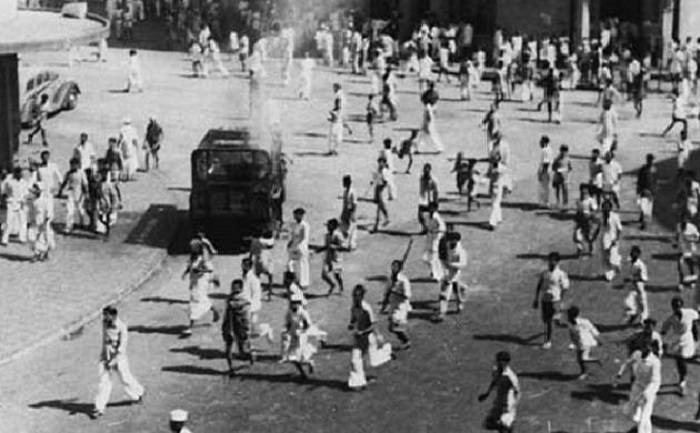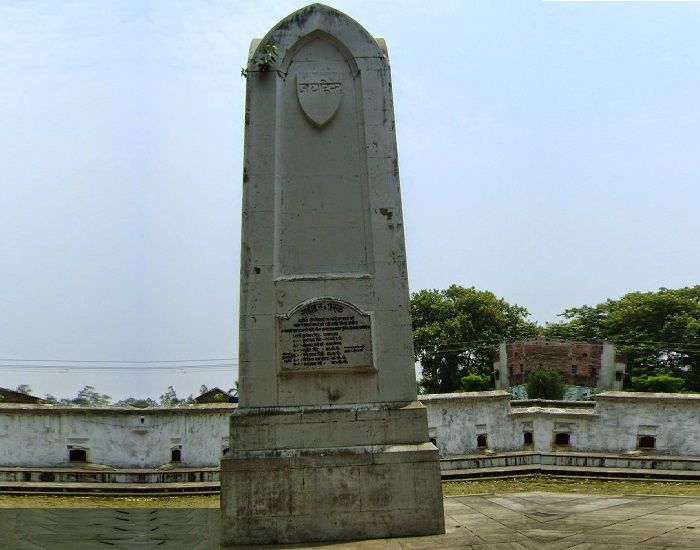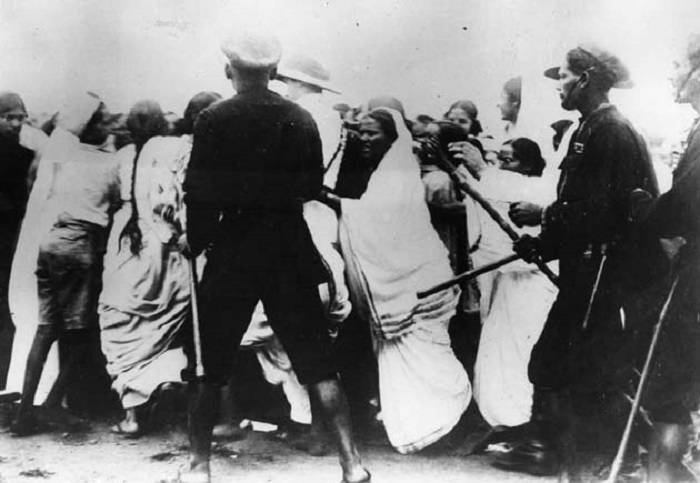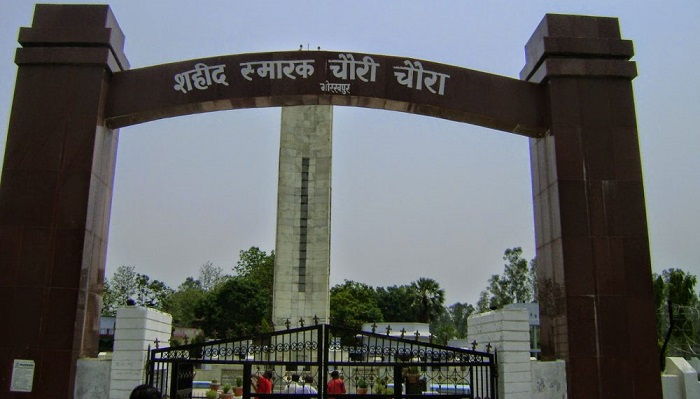Fast Facts
Date: February 5, 1922
Place: Chauri Chaura, Gorakhpur district, The United Provinces
Nature of Incident: Violent attack
Number of Casualties: 25 deaths
Historical Significance: ‘Non-cooperation Movement’ was called off due to the incident
The Chauri Chaura incident, which took place on February 5, 1922, in the Gorakhpur district of British India, is considered as one of the most prominent incidents of pre-independent India. During the non-cooperation movement, a group of protestors clashed with police and as a result of this, policemen opened fired on the protestors. Provoked by this shooting incident, the demonstrators burnt down a police station, killing all its occupants. Resulting in the death of 22 or 23 policemen and three civilians, the incident also turned many against Mahatma Gandhi as he called off the ‘Non-cooperation Movement’ after the incident. Though a part of India’s freedom struggle, the incident is considered by many as tragic.

Image Credit : http://www.newsnation.in/india-news/70-years-of-independence-know-all-about-chauri-chaura-kakori-landmark-event-in-the-india-s-freedom-struggle-article-179073.html
The Incident
During the ‘Non-cooperation Movement,’ a group of protestors marched into the Chauri Chaura market on February 2, 1922, in order to protest against high and unusual meat prices. But their protest was interrupted by local police officers, and they arrested the leaders. They also used force on the protestors thereby injuring many in the process. This instigated the protestors, and they returned on February 5. On that fateful day, a group of 2,000 to 2,500 protesters marched towards Chauri Chaura market, where they chose to picket a liquor shop as part of their protest. As expected, the police once again turned up and arrested one of their leaders. This enraged the protestors and a part of them marched towards the Chauri Chaura police station, where their leaders were locked up. The gathered crowd started shouting slogans, urging their release. In order to get the situation under control, police officials fired a couple of warning shots in air, which agitated the protestors further. As a result, they started pelting stones on the cops, which, in turn, forced the sub-inspector in charge to order his fellow officers to open fire.

Image Credit : Image Credit : http://www.generalknowledgequizblog.com/2017/07/chauri-chaura-incident-gorakhpur-1922.html
Despite killing three and wounding many, the police was unable to stop the advancing crowd, which had now lost all rationality upon seeing the death of three. Seeking vengeance for the loss of lives, the protestors continued to intimidate the police by advancing towards them until the seriously outnumbered police were forced to retreat by holing up in the Chauri Chaura police station. This strategy worked against them as the angry mob had no hesitation in torching the police station with its occupants inside. Trapped inside the fiercely burning Chauri Chaura police station were a number of Indian policemen and official messengers known as ‘chaprassis.’ It was later reported that the incident had claimed the lives of 22 policemen and that many were killed at the entrance of the station while they were trying to escape the fire. According to a few reports, 23 policemen were killed in the incident as one of them lost his life later in the nearby hospital. The incident spread like wildfire and the British were obviously infuriated, though many Indians thought of it as an act of heroism and daredevilry. However, not all Indians were amused. In fact, some were extremely disappointed with the inhuman act and among them was Mahatma Gandhi, who straight away denounced the incident calling it cowardice. To the disbelief of many, Gandhiji cancelled the Non-Cooperation Movement as a result of the Chauri Chaura Incident.

Image Credit : http://bhagatsinghstudy.blogspot.com/2014/07/chauri-chaura-revolt-and-freedom.html
Result
An immediate aftermath of the incident was the British enforcing the ‘martial law,’ which transferred the power directly to the military in Chauri Chaura and surrounding areas. As expected, numerous raids were carried out, which led to the arrest of hundreds of people. While many were reportedly locked away and tortured, 228 were brought to trial. They were arrested on charges of rioting and arson, and the trial went on for eight months. While six among those who were brought to trial died in the custody, 172 were penalized with death sentences by hanging. The verdict gave rise to an outpour of rage as many ridiculed the court’s decision. Hundreds of thousands joined in the protest, with Indian Communist leader M.N. Roy calling the verdict a ‘legalized murder.’ He even called for a general strike, which forced the court to review the verdict. The High Court in Allahabad reviewed the verdict on April 20, 1923, which resulted in a drastic change in the verdict. According to the new verdict, 19 were given death sentences, while 110 of them were sentenced to prison for life and the rest to long terms of imprisonment. The ones who were imprisoned would later be released at the time of independence.

Image Credit : http://www.generalknowledgequizblog.com/2017/07/chauri-chaura-incident-gorakhpur-1922.html
Probably the most important action post the Chauri Chaura Incident was calling-off the ‘Non-Cooperation Movement.’ Gandhi thought of the Chauri Chaura incident as an act of barbarism and took upon himself the responsibility of the bloodshed. Since the incident had occurred after Gandhi’s call for ‘Non-cooperation Movement,’ the Mahatma was convinced that he was responsible for the lives lost. He also felt the guilt of not adequately emphasizing the importance of non-violence before encouraging his countrymen to revolt against the British as part of the ‘Non-cooperation Movement.’ He also felt that he hadn’t trained his fellow countrymen to adhere to the policies of ‘ahimsa’ (non-violence) no matter what. As a penance, he went on a five-day fast, which attracted strong views from many. Apart from deciding that the Indians were not yet ready for a big movement, Gandhi also called off the ‘Non-cooperation Movement.’
The decision to call-off the ‘Non-cooperation Movement’ was opposed by many prominent leaders, who did not find much logic in Mahatma’s decision. Many of his staunch supporters, including C. Rajagopalachari publicly said that they were baffled by the decision. The Indian National Congress called off the ‘Non-cooperation Movement’ on February 12, 1922.
The British, however, arrested Gandhi and sentenced him to six years of imprisonment. In February 1924, Gandhi was released from the prison on grounds of his deteriorating health.
The decision to call off the ‘Non-cooperation Movement’ directly affected the ‘Khilafat Movement.’ Members of both the Congress and Khilafat spoke against the decision, calling it an act of betrayal. It angered many prominent leaders, including Motilal Nehru and Maulana Abdul Bari. Bari went on to say that he was doubtful of Gandhi’s future as the national leader had not yet achieved anything significant through non-violent protests.

Image Credit : https://www.awaaznation.com/social-issues/chauri-chaura-incident-was-responsible-for-stopping-the-non-cooperation-movement/
Memorial
In 1923, British authorities dedicated a memorial to the dead policemen. Post independence, a verse written by poet Jagdamba Prasad and the words ‘Jai Hind’ were inscribed on the memorial.
In 1971, the people of Chauri Chaura decided to honor the ones who were executed by the British government. Hence, they came up with an association named ‘Chauri Chaura Shaheed Smarak Samiti’ and two years later they built a triangular minaret near a lake at Chauri Chaura. Thanks to the contribution of many, the memorial was constructed at a cost of 13,500 rupees.
The government of India later constructed a memorial of its own with the names of those executed etched on it. It also set up a museum and library related to Indian independence near the memorial.
The Indian Railways has named one of its trains ‘Chauri Chaura Express,’ which currently operates from Kanpur to Gorakhpur in Uttar Pradesh.


